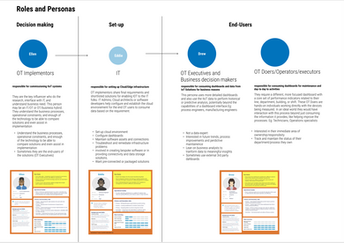UNIFIED NAVIGATION
To conceptualize an unified approach to discover, adopt, and establish operability across all IoT services within the console experience

BACKGROUND
IoT services operate independently, lacking a cohesive strategy to integrate them into a seamless user experience. Customers face challenges in discovering, adopting, and utilizing IoT solutions due to fragmented service offerings and a steep learning curve. To address these challenges, there is a need for a unified approach that enables users to easily discover, adopt, and establish operability across all IoT services within the console, providing a more intuitive and connected experience.

MY ROLE
My role was to define the vision for a unified IoT service experience, lead research to identify customer pain points, and collaborate with cross-functional teams to develop a seamless framework for discovering, adopting, and integrating IoT services. I focused on simplifying the user experience, driving adoption, and ensuring the solution's scalability across all IoT services.
APPROACH
Comprehensive User Research
Conducted in-depth research, including user interviews, surveys, and usability testing, to understand the pain points, needs, and workflows of IoT customers.
Focused on identifying barriers to discovery, adoption, and operability across IoT services.
Mapping the User Journey
Create detailed user journey maps that highlight key touch points, decision trees, and problem areas within the current IoT console experience.
This helped identify gaps where concepts were siloed or confusing.
Developing a Strategy for a Unified User Experience
Research revealed IT/OT users favor a jobs-to-be-done approach over a capability-driven one.
My proposal included unified navigation, simplified onboarding, and stronger IIoT integrations, streamlining service discovery and task-based navigation.
I organized all key tasks and built a navigation menu to guide users through them efficiently.
Cross-Team Collaboration
Worked closely with product and engineering teams to ensure that UX solutions are aligned with the technical capabilities of IoT services, fostering a shared vision for a cohesive, user-centric experience. Seamless Interoperability The proposed unified experience opened doors to thinking about a unified framework where IoT services would have to communicate effectively with each other. It encouraged teams to deep dive into areas where development could be standardized between services and think of future-forward integrations.
Iterative Testing and Feedback Loops
Continuously tested the updated console experience with real users, gathering feedback through embedded feedback links and usability testing. This ensures the design evolves based on user input and adapts to their needs.
OUTCOME
I presented to leadership and service teams a conceptual pitch for unified navigation across platforms (console, off-console setup, API interactions, and third-party integrations) to create a cohesive user experience. For the first time, teams saw a visual direction for uniting services and acknowledged the absence of this unification so far.
Clickable Prototype for Unified Navigation Covering the Entire User Journey
Demonstrating Landing Pads for Each Sub-Service

IMPACT
The Unified Navigation Concept
The clickable prototype for unified navigation, demonstrating landing pads for each sub-service,provided a clear, actionable vision for how IoT services could be unified across platforms, streamlining the user journey.
Cross-fuctional integration
Leadership and service teams acknowledged the critical gaps in the existing fragmented experience, and the prototype became a catalyst for aligning teams around a cohesive strategy.
Simplified user experience
This approach reduced user friction, simplified task discovery, and paved the way for stronger integrations, leading to a more intuitive, efficient user experience.







